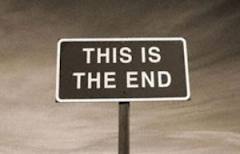Concluding a narrative essay can be a challenge for experienced and beginning writers alike. Writers often fall into the trap of tying the narrative up too neatly, telling the readers what they are supposed to take away from their story instead of letting the reader come to their own conclusions. Study a few essays from some of the great writers and notice how they conclude their stories. Often the ending to their narratives is left ambiguous; the reader isn’t exactly sure how everything will turn out. The reader should be left with a sense of closure, without being told how or what to feel.
Conclude with an Image
Have you ever heard the phrase, “Show, don’t tell”? Showing an image puts a visual in the reader’s mind, an effective way to conclude without telling too much. Showing an image prevents you from telling your feelings, which, in most cases, you want to avoid. In the essay “Buckeye,” Scott Russell Sanders uses the image of a grazing deer to conclude his narrative:
. . . within a few paces of a grazing deer, close enough to see the delicate lips, the twitching nostrils, the glossy, fathomless eyes.
This lyrical conclusion comes from “Bathing,” as writer Kathryn Winograd shows the last moments of her bath:
The wind sings through the window like a siren, and the steam floats from my skin like milk.
Conclude in the Action
Show yourself in action. Move. Do something, anything, to avoid telling the reader how happy, or sad, or hopeful you are in the end. Look at something, and walk away, as Edward Hoagland does in “The Courage of Turtles”:
But since, short of diving in after him, there was nothing I could do, I walked away.
Or look at something, and become mesmerized. A chapter from the classic memoir, Stop Time by Frank Conroy, “Yo-Yo Going Down, a Mad Squirrel Coming Up,” shows a young Conroy as he watches a girl through a window:
That same night, hidden in the greenery under the window, I watched a naked girl let down her long red hair.
Conclude with Dialogue
Dialogue can be tricky to conclude with, but can work if it avoids a message or moral. You’ll only want to use this concluding technique if it has been maintained in the narrative; you probably don’t want to throw in spoken word if we haven’t heard anyone speak up until that point.
David Sedaris, in his essay, “Cyclops,” ends with the voice of his father, who is the main character in this essay:
“I don’t know where you got it from, but in the end, it’s going to kill you.”
The following brief reply, taken from Jo Ann Beard’s “The Fourth State of Matter,” shows an image, followed by unquoted dialogue. Beard uses italics instead:
Around my neck is the stone he brought me from Poland. I hold it out. Like this? I ask. Shards of fly wings, suspended in amber.
Exactly, he says.
Another example below comes again from Scott Russell Sanders, this from “Cloud Crossing,” as his toddler son babbles:
“Moon,” he is piping from the back seat, “moon, moon!”
Conclude by Reflecting
When used well, reflection is a great way to convey feelings without telling the reader how you felt – or how they should feel. Reflection offers the writer’s thoughts about what is happening or has happened. Reflection can include thoughts about the moment or thoughts looking back, about the experience. Reflection can add clarity, as we see the writer thinking through the experience. This concluding moment is from James Baldwin’s, “Notes of a Native Son”:
. . . I wished that he had been beside me so that I could have searched his face for the answers which only the future would give me now.
Bret Lott, in his short essay, “Brothers,” reflects on childhood memories of his family, taking him into the present with his own two sons:
What I believe is this: That pinch was entry into our childhood; my arm around him, our smiling, is the proof of us two surfacing, alive but not unscathed.
And here are my own two boys, already embarked.
In Conclusion
When writing your own conclusion, think about what you want your readers to take away from your story. Then think about how best you can show it. You seldom can go wrong with images. Dialogue is a great way to let a character have the last word. Ending with reflection, sharing thoughts or feelings, works when a bit more needs to be said. Think about what feeling, emotion, or question you want to leave your readers with, the take-away, then choose the type of conclusion that best suits the narrative. It’s not unusual to actually write the conclusion first, and it often serves as a road map to get the narrative where it needs to go. Taking time to carefully craft a conclusion can make or break your narrative.


